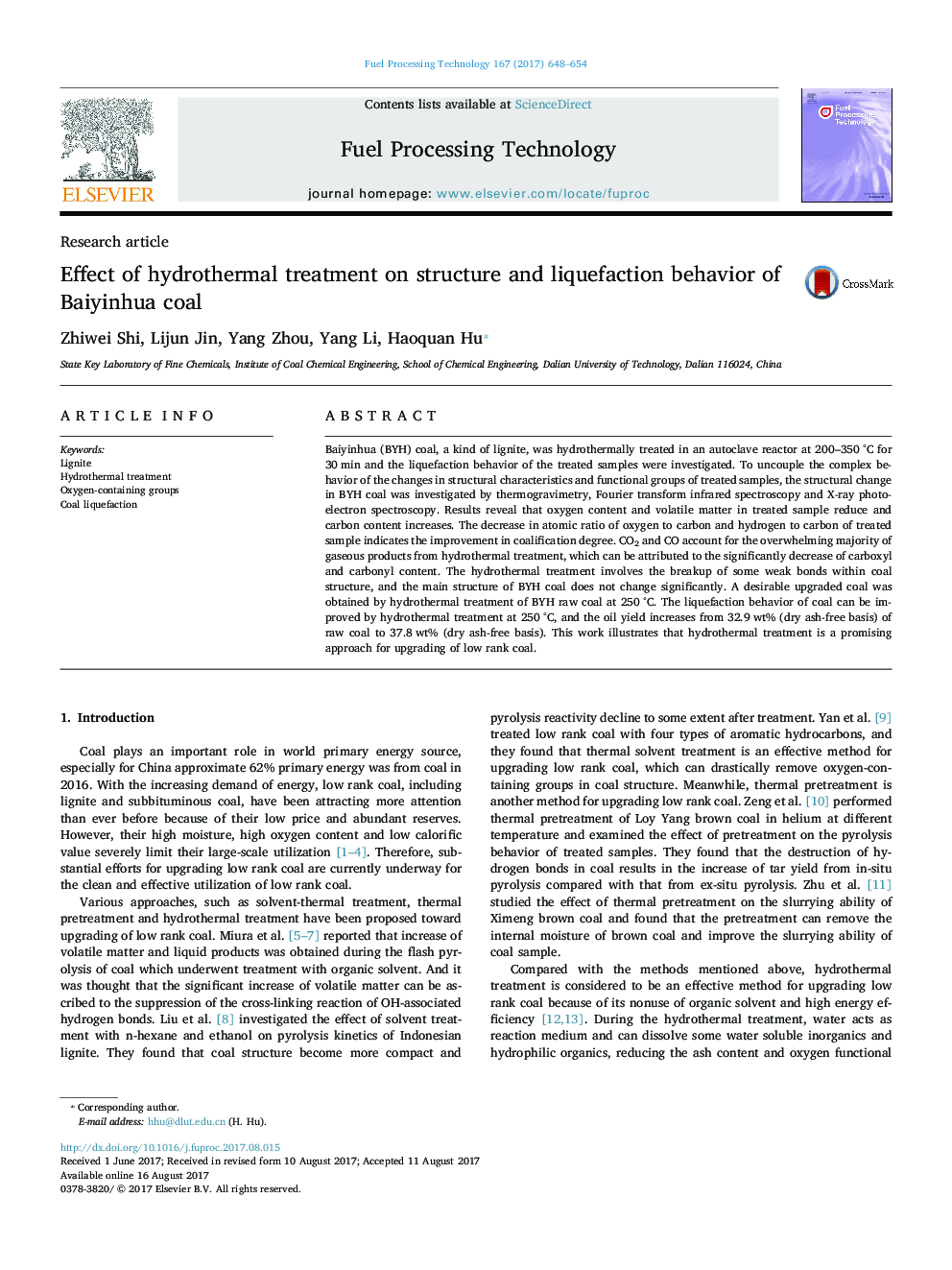| Article ID | Journal | Published Year | Pages | File Type |
|---|---|---|---|---|
| 6476371 | Fuel Processing Technology | 2017 | 7 Pages |
â¢Hydrothermal treatment (HT) of BYH coal made its oxygen content and volatile matter reduced.â¢CO2 and CO account for large part of gaseous products in HT of BYH coal.â¢HT results in the cleavage of weak covalent bonds, and the main structure of coal does not change significantly.â¢HT at 200 °C and 250 °C improve the liquefaction oil yield of BYH coal.
Baiyinhua (BYH) coal, a kind of lignite, was hydrothermally treated in an autoclave reactor at 200-350 °C for 30 min and the liquefaction behavior of the treated samples were investigated. To uncouple the complex behavior of the changes in structural characteristics and functional groups of treated samples, the structural change in BYH coal was investigated by thermogravimetry, Fourier transform infrared spectroscopy and X-ray photoelectron spectroscopy. Results reveal that oxygen content and volatile matter in treated sample reduce and carbon content increases. The decrease in atomic ratio of oxygen to carbon and hydrogen to carbon of treated sample indicates the improvement in coalification degree. CO2 and CO account for the overwhelming majority of gaseous products from hydrothermal treatment, which can be attributed to the significantly decrease of carboxyl and carbonyl content. The hydrothermal treatment involves the breakup of some weak bonds within coal structure, and the main structure of BYH coal does not change significantly. A desirable upgraded coal was obtained by hydrothermal treatment of BYH raw coal at 250 °C. The liquefaction behavior of coal can be improved by hydrothermal treatment at 250 °C, and the oil yield increases from 32.9 wt% (dry ash-free basis) of raw coal to 37.8 wt% (dry ash-free basis). This work illustrates that hydrothermal treatment is a promising approach for upgrading of low rank coal.
